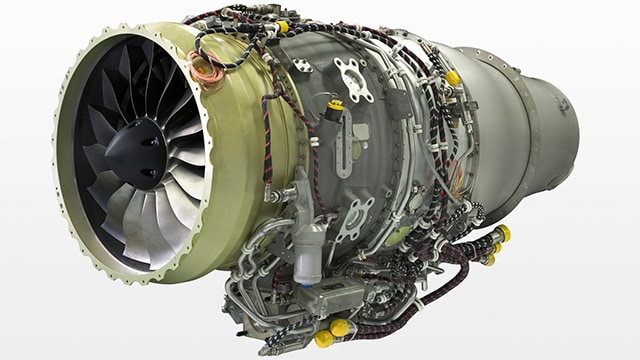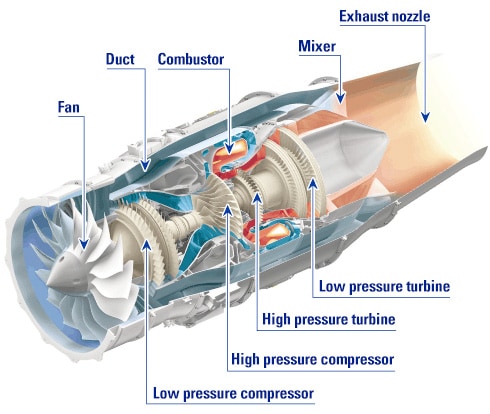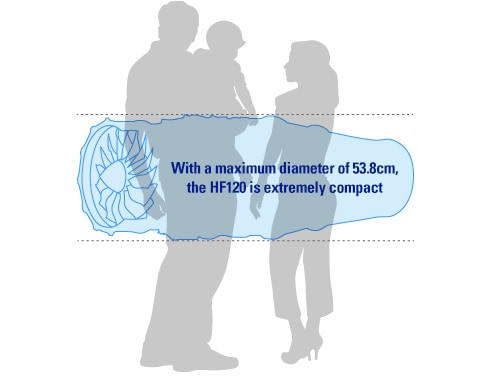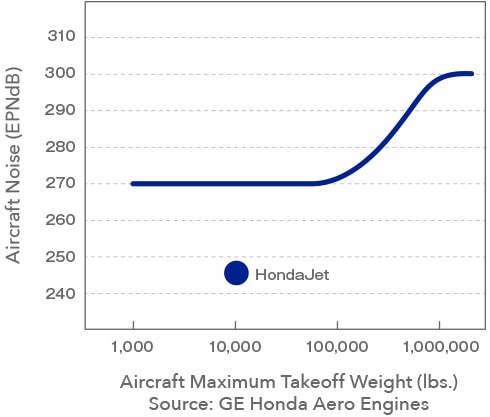Design Innovation
Innovation 4
Lightweight, Compact, High-Performance HF120 Turbofan Engine
HondaJet is powered by the GE Honda Aero Engine, HF120, a lightweight, compact and high-thrust turbofan engine. From the perspective of reducing the environmental footprint, the HF120 has achieved an emissions level that is equivalent to or less than the standards set by the Committee on Aviation Environmental Protection (CAEP). The HF120 also clears the noise level required by the Code of Federal Regulations (CFR) Part 36 Stage 4.
Moreover, the HF120 employs a digital engine control (Full Authority Digital Electronic Control) system which enables the HF120 to achieve its high efficiency and reliability.


Perspective drawing of internal structure
Benefit 1: Compact, lightweight and high-thrust engine contributes to an increase in flight speed and fuel efficiency
The HF120 turbofan engine produces a large amount of thrust despite its compact and lightweight design with a maximum diameter as small as approximately 53.8 cm, which contributes to HondaJet’s high flight speed and fuel efficiency.


Size of HF120 Turbofan Engine
Benefit 2: Low noise and high environmental performance enhance HondaJet’s flight comfort
By mounting the high-performance and low-noise HF120 turbofan engine on the wing away from the fuselage, HondaJet realizes quietness unprecedented among all business jets in the market to date. Moreover, a reduction in engine emissions reduces the environmental footprint of the engine, which enables HondaJet to realize more environmentally-responsible flights.
For more information about HF120, click here.
(Official Aero Engine site)

Stage 4 Aircraft Noise Requirements